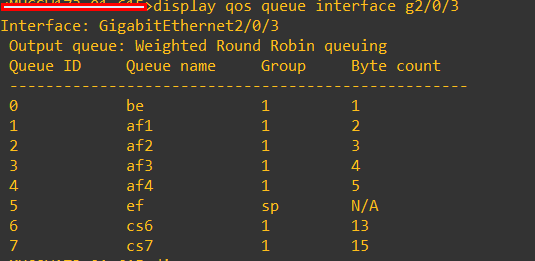I'm having great difficulty transferring a QoS configuration from a Procurve HP switch to an HP switch running Comware v7. The documentation lists all available configuration parameters, but fails to explain how they all fit together.
Each blade in our rack has only two physical interfaces, so different types of traffic are separated by VLAN tags.
Each VLAN basically needs to be classified into one of five groups, with descending priority and a guaranteed minimum bandwidth for each group. If there is no other traffic on the wire, each group should be able to claim the full capacity of the link.
The Procurve configuration is as follows:
vlan 10
name blah
qos priority 7
exit
vlan 20
name blahblah
qos priority 3
exit
vlan 30
name blahblahblah
qos priority 1
exit
[...etc...]
interface 1
bandwidth-min output 10 10 60 20
interface 2
bandwidth-min output 10 10 60 20
[...etc...]
I have been experimenting with wfq configuration for the Comware switch, but I cannot seem to fit the pieces together.
What I think I want to do is:
Classify the traffic on each VLAN into a local-precendence group (0-7) using something like this
traffic classifier BLAH operator and
if-match any
traffic behavior BLAH
remark local-precendence 7
qos policy BLAH
classifier BLAH behavior BLAH
qos vlan-policy BLAH vlan 10 inbound
And use the local-precedence groups to separate the traffic into different wfq queues with a guaranteed minimum bandwidth:
interface Ten-GigabitEthernet 1/1/8
qos wfq byte-count
qos wfq 7 group 1 byte-count 5
qos bandwidth queue 7 min 4000000
[...etc...]
Although the configuration seems to work, I cannot confirm that the traffic is marked correctly and weighted fair queuing is actually taking place.
Can anyone point me in the right direction?





display qos queue-statistics interface outboundand watching the counters for each queue go up. However, I noticed that without any traffic marking, traffic is still separated into queues 0, 2 and 7. There are no 802.1p markers in the VLANs though. Can anybody explain how traffic is separated into 3 queues by default in Comware?